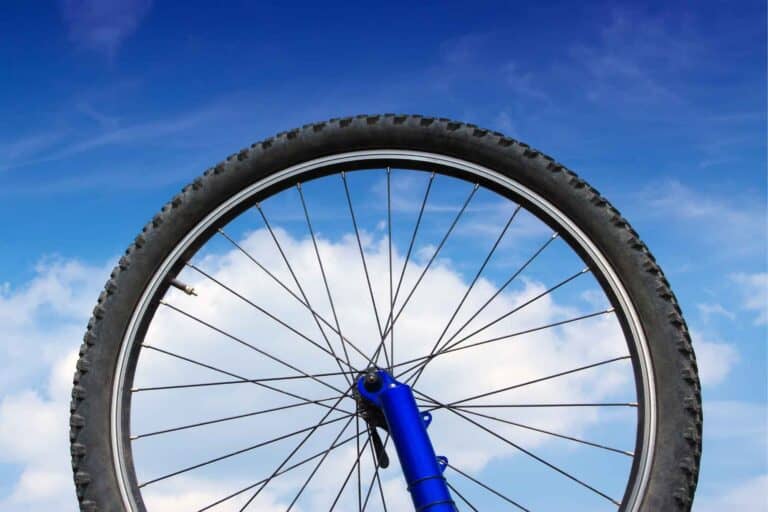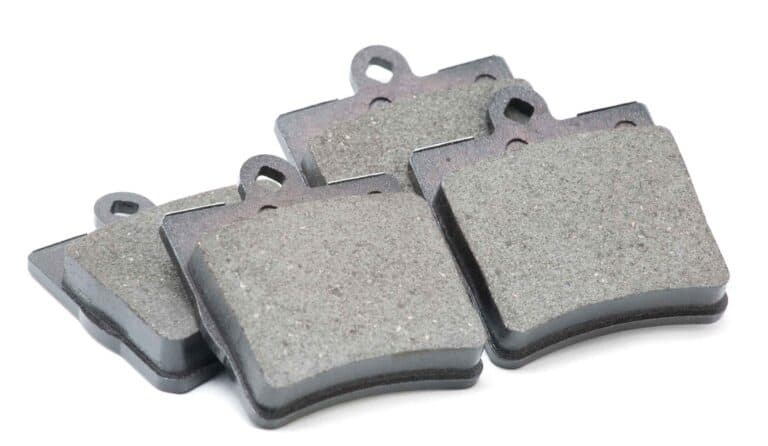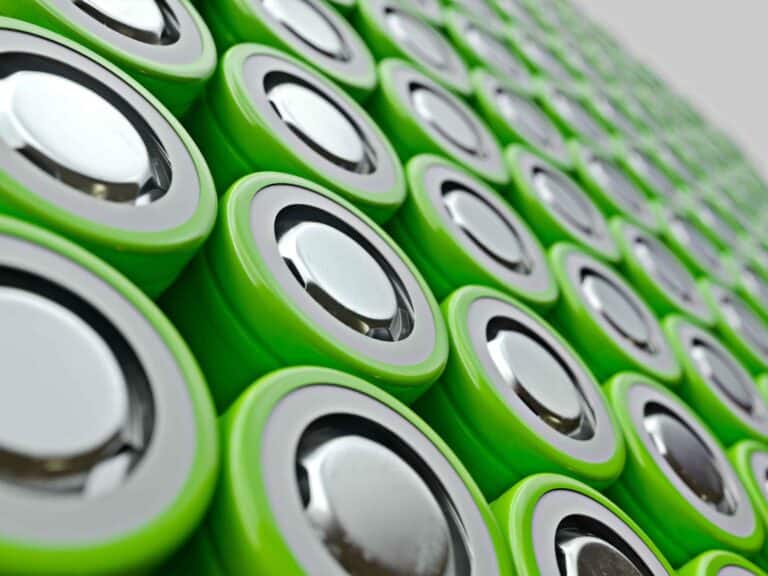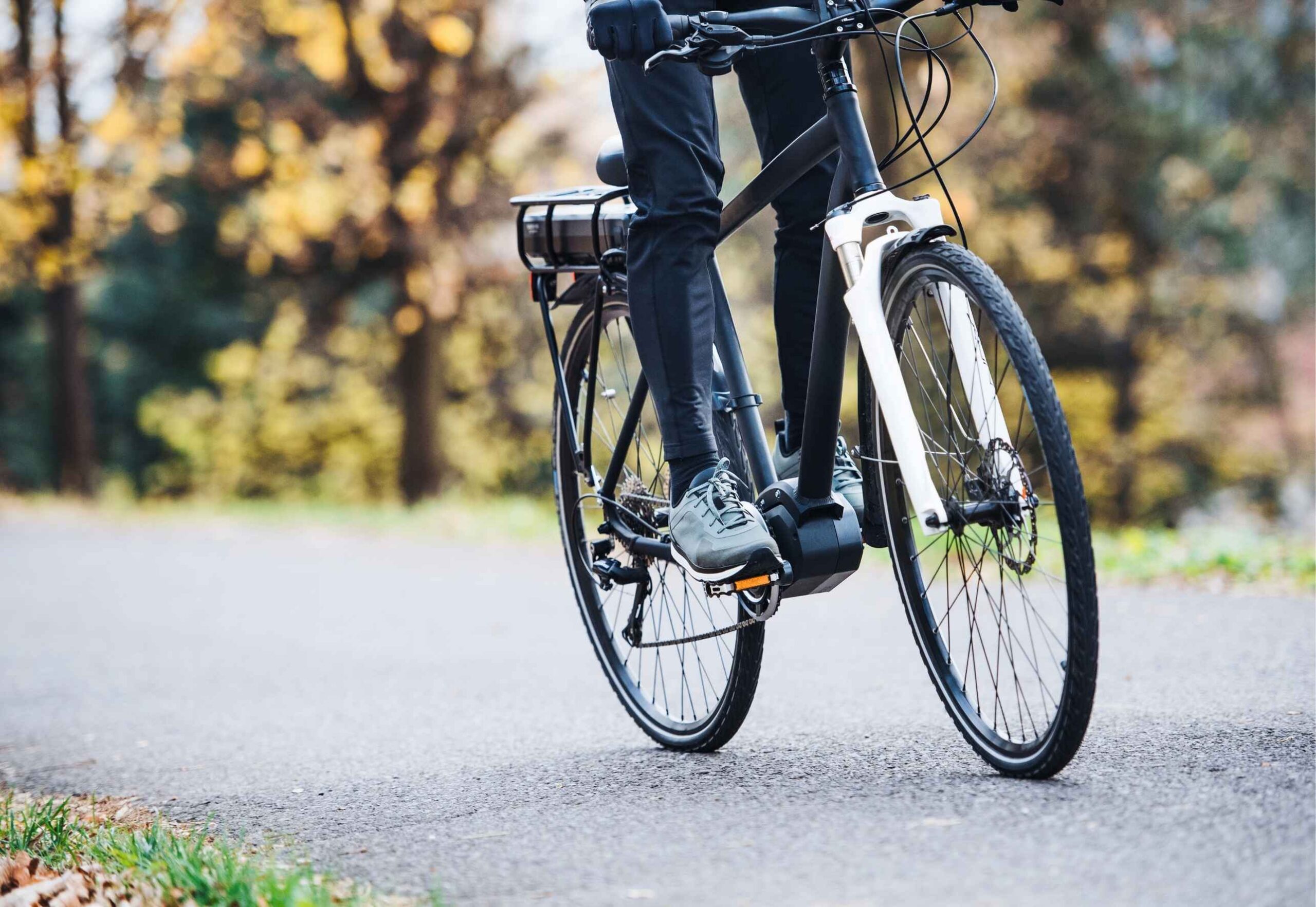Best Ebike Hydraulic Brakes (We Tested the Top 9)
I love bragging about the braking power of my eBike. I squeeze the brakes, and my electric bike stops on a dime. So what are the best electric bike hydraulic brakes?
As a general rule, Shimano SAINT Hydraulic Disc Brake 4-Piston Caliper BR-M820 is the best eBike Hydraulic brake. It has a 1000mm front and 1700 mm rear. Since it has four ceramic pistons, it has a stopping power that is consistent, responsive, and powerful.
Choosing the best hydraulic brake for your electric bike is critical. You have to check everything from the hydraulic brake key features to its level of performance. Therefore, I will share a helpful chart of the best hydraulic brakes from top-rated manufacturers and break down some of their key attributes.
Shimano SAINT Hydraulic Disc Brake 4-Piston Caliper BR-M820 Is The Best eBike Hydraulic Brake.
Shimano Saint hydraulic disc brakes (BR-M820) are the best hydraulic brakes predominantly used by gravity riders. Although these hydraulic brakes are costly, they are the first choice of downhill riders.
The fact that they are the first choice of downhill riders speaks volumes about the braking power of these brakes. Slowing or stopping an electric bike while it’s going downhill is one of the most challenging times for your brakes to work.
Who wouldn’t choose these hydraulic brakes? If given the resources, everyone—riders or not, would pick them! Shimano Saint hydraulic brakes are superb, super stable, and have consistent braking power.
BR-M820 hydraulic brakes give you full braking performance no matter the weather conditions or how rough and rugged the terrain is.
These hydraulic brakes have 4-ceramic pistons, giving you the ultimate braking experience, even downhill. Having 4 Pistons provides you with optimal braking power through excellent heat dispersion. In addition, they are effortless to install.
Additionally, BR-M820 hydraulic brakes are easy to bleed because of their one-way bleeding feature. Furthermore, the brake lever has an adjustable reach so that you can adjust it according to your liking.
Best Hydraulic Brakes For Electric Bikes
| Manufacturer | Model | Piston | Lever Blade | Fluid | Weight (g) |
| Shimano | BR-M820 | 4 pistons | — | Shimano Mineral | 320 |
| Tektro Auriga | e-Twin HD-e525 | 2 pistons | 2.5-finger blade | Non-corrosive Mineral | 545 g/ set |
| Tektro Auriga | e-Tune HD-e530 | 2 pistons | 2.5-finger blade | Non-corrosive Mineral | Front: 329 Rear: 342 |
| Tektro Dorado | Hd-e725 | 4 pistons | 2-finger blade | Non-corrosive Mineral | Front: 261 Rear: 281 |
| Magura | MT5 e-Stop | 4 pistons | 2-finger blade | Royal Blood | 275 |
| Magura | MT4 e-Stop | 2 pistons | 3-finger blade | Royal Blood | 230 |
| Shimano | BL-MT200 | 2 pistons | 3-finger blade | Shimano Mineral | Front: 280 Rear: 295 |
| SRAM | Guide RE | 4 pistons | — | DOT 5.1 | 415 |
| SRAM | Code R | 4 pistons | — | DOT 5.1 | 443 |
| SRAM | Code RSC | 4 pistons | — | DOT 5.1 | 443 |
Shimano Saint Hydraulic Brake (BR-M820)
Shimano Saint Hydraulic Brake (BR-M820) has 4-piston calipers that provide powerful braking to riders. In addition, it is equipped with long hoses. With its 3-layer brake hose, BR-M820 has a great feel and makes you feel confident when riding downhill. It also fits most electric bikes.
This hydraulic brake is commonly used for MTB, but they are also perfect for electric bikes.
Tektro Auriga e-Twin HD- e525
Tektro Auriga e-Twin HD- e525 has 2-piston calipers and a cut-off power sensor. This brake can be installed and adjusted easily. Tektro Auriga e-Twin HD-e525 hydraulic brake is suitable for mountain bikes, electric bikes, EMTB’s, and 3-wheeled bicycles.
This hydraulic brake is also ideal for heavy and high-powered electric bikes.
On top of that, Tektro Auriga e-Twin HD- e525 has a built-in emergency brake sensor and parking brake lock. With both of those, you can ensure that you will stay safe while riding.
Tektro Auriga e-Tune HD- e530
Tektro Auriga e-Tune HD-e530 has 2-piston calipers and a cut-off power sensor. The brake lever of Tektro Auriga e-Tune HD- e530 has a two-piece clamp and a parking lock.
This hydraulic brake uses a non-corrosive mineral oil with good heat expansion properties. This brake is compatible with electric bikes, EMTB’s, and mountain bikes.
Tektro Auriga e-Tune HD- e530 and Tektro Auriga e-Twin HD- e525 hydraulic brakes are typically used for electric bikes with specific speeds that can reach up to 20mph.
Tektro Dorado HD-e725
Tektro Dorado HD-e725 has 4-piston calipers with a power cut-off sensor. This type of hydraulic brake is known for its power and controlled braking.
The brake lever of Tektro Dorado Hd-e725 has a reach adjustment suitable for your hand size. Dorado HD-e725 is primarily used for electric bikes with a speed of 28mph.
Magura MT5 e-Stop
Magura MT5 e-Stop is a hydraulic brake with 4-piston calipers and high braking power. The lever blade is made from aluminum and gives an incredible lever feel.
MT5 e-Stop is suitable for electric bikes, mountain bikes, and EMTB’s.
The recommended rotors for Magura MT5 e-Stop are MDR-C and MDR-D. With eStop hydraulic brake system, optimized rotors, and Magura’s sport brake pads, the brakes can offer maximum braking performance.
Magura hydraulic brakes use mineral-oil-based fluid or called royal blood.
Magura MT4 e-Stop
Magura MT4 e-Stop has 2-piston calipers. The aluminum lever blade of Mt4 is lightweight but very durable. You can mount this hydraulic brake in either left or right. This optimized hydraulic brake is for modern electric bikes.
This model of hydraulic brake is compatible with E-city and E-trekking.
Shimano BL-MT200
Shimano BL-MT200 has 2-piston calipers and offers adjusted braking power for beginner riders. In addition, it has reliable braking performance. Shimano BL-MT200 is best used for rotors with 160mm and 180 mm sizes.
BL-MT200 hydraulic brake is easy to install and maintain. The lever brake has a reach adjust tool with a minimum lever reach adjustment of 75mm. Shimano BL-MT200 is fit for any biking style and riders with smaller hands.
These Shimano hydraulic brakes are suitable for electric bikes and flat bar bicycles. Furthermore, it uses Shimano mineral oil.
SRAM Guide RE
SRAM Guide RE is one of the most impressive brakes SRAM has made. SRAM Guide RE hydraulic brake has 4-piston calipers. As a result, this brake can handle higher speed and intense use.
SRAM Guide RE hydraulic brakes are perfectly fit for mountain bikes, EMTB’s and 20kg electric bikes that need maximum stopping power. You can also use them for regular bicycles. SRAM Guide RE uses DOT 5.1 fluid.
SRAM Code R
SRAM Code R has many great attributes. Excellent feel, significant modulation, and reliable braking power are among these attributes.
In addition, SRAM Code R has a 4-piston caliper perfect for any riding conditions.
Additionally, a rider can adjust code R according to the rider’s preference. This model of hydraulic brake is for heavy-duty electric bikes, mountain bikes, and EMTB’s.
SRAM Code RSC
SRAM Code RSC is one of the popular hydraulic brakes designed by SRAM. It has 4-piston and dual-diameter calipers.
What amazes me most is that Code RSC has a huge fluid reservoir. With that, Code RSC provides powerful braking and excellent heat management.
This hydraulic brake is commonly used for mountain bikes, EMTB’s, and enduro.
One of the dissimilarities between Code RSC and Code R is that Code RSC uses phenolic plastic pistons for more improved heat management. In contrast, Code R uses an aluminum material for its pistons.
On top of that, Code RSC has pad contact adjustment while Code R doesn’t have pad contact adjustment.
Which Is Better— 4-piston Calipers Hydraulic Brakes Or 2-piston Calipers Hydraulic Brakes?
As a general rule, hydraulic brakes with 4-piston calipers are better than those with 2-piston calipers. This is because hydraulic brakes with 4-piston calipers have more braking performance.
The difference between 4-piston calipers and 2-piston calipers is that 4-piston calipers give more powerful braking performance than 2-piston calipers.
Upgrading from 2-piston calipers to 4-piston calipers will provide you with a nice feel while braking during a steep descent.
In addition, because 4-piston calipers are bigger than 2-piston calipers, they have more space for more fluid. With that, they can manage heat better than 2-piston calipers, resulting in less brake fade.
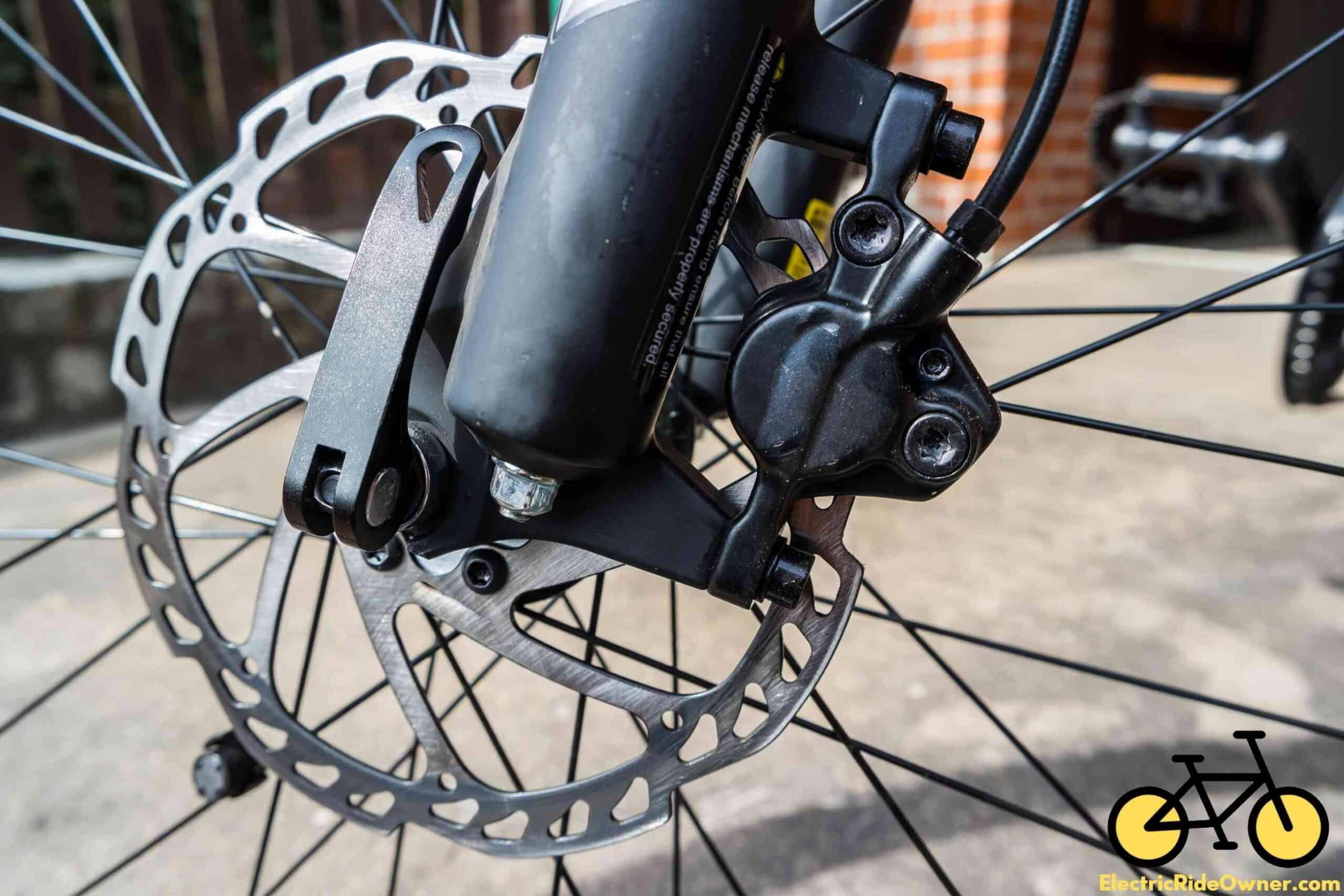
Are Hydraulic Bike Brakes Worth It?
As a whole, Hydraulic brakes are worth it. They have higher braking performance than any other type of brake. However, hydraulic brakes tend to be more expensive than mechanical disc brakes. Despite this, the added cost of hydraulic brakes is more than made up with the additional stopping power.
Since hydraulic brakes are complex, they tend to be more expensive. However, they are indeed worth the price for hydraulic brakes’ braking power.
Hydraulic brakes offer incredible power to give you maximum braking force at high speed. With that, you can ride your bike as fast as you want and still be able to stop on time. In addition, hydraulic brakes have lots of benefits to offer.
Advantages And Disadvantages Of Hydraulic Brakes
| Advantages | Disadvantages |
| Efficient The hydraulic brake is sealed Good in all weather conditions It helps you stop faster Better heat management | Expensive Difficult to maintain Hard to repair |
Advantages of Hydraulic Brakes
Hydraulic Brakes Are Efficient.
Hydraulic brakes have efficient braking performance. I remember riding my electric bike with a mechanical braking system.
It took a long time to bring my eBike to a complete stop.
I ended up contacting a local shop for a hydraulic brake installation. After getting my hydraulic brakes put in, I never had any issues quickly bringing my electric bike to a complete stop. It even helped bring the e-bike to a stop going downhill.
With hydraulic brakes, you won’t need to pull the lever hard. Instead, a slight pull of a finger is enough, unlike mechanical braking systems.
Hydraulic brakes are smooth, responsive, and sensitive, giving you incredible stopping power.
The Hydraulic Braking System Is Sealed.
One of the significant benefits of hydraulic brakes is that they are sealed. No one wants a messy braking system after a ride.
The hydraulic braking system is enclosed and blocks dirt, mud, and contaminants from getting inside. That’s why you don’t need to check and maintain your braking system as often. Less cleaning time and maintenance means less money and time spent.
This gives you more time to enjoy the ride.
Hydraulic Brakes Perform Well In All Weather Conditions.
Who doesn’t want to use a brake that can perform well even in wet conditions? Rainy and damp environmental conditions are the enemies of brakes. Fortunately, this is not the case with hydraulic brakes.
Since they are enclosed, no debris and contaminants can get inside.
Hydraulic brakes help provide more controlled power that makes your braking smooth even when it’s raining. Though they work well in all weather conditions, it is still advisable not to soak them in water.
Hydraulic Brakes Can Make You Stop Faster.
While riding, the last thing you want is for your brakes not to stop your electric bike in time. Hydraulic brakes give your brake system more stopping power, giving your electric bike the ability to stop in time. In addition, since you can stop fast, it gives you the ability to ride fast.
In addition, hydraulic brakes give a nice braking feel when riding downhill or uphill.
Hydraulic Brakes Have Excellent Heat Management.
Hydraulic brakes can manage heat incredibly well due to the hydraulic fluid used. The fluid can resist or distribute heat fairly throughout the system.
In addition, the hydraulic fluid prevents the components of the hydraulic braking system from wearing and tearing easily.
“The Clear Difference Between Advantages and Disadvantages Is The Vantage Point“
-The Lone Rider
Disadvantages of Hydraulic Brakes
Hydraulic Brakes Are Costly.
One of the downsides of hydraulic brakes is their price. One hydraulic brake costs about a hundred dollars. So you might need to think thoroughly before buying hydraulic brakes if you have a very tight budget.
Low-budget hydraulic brakes do not guarantee outstanding performance. As a result, you might end up being disappointed. However, given the performance level of hydraulic brakes, they may be worth buying.
Hydraulic Brakes Are Difficult To Repair And Maintain.
While it’s true that hydraulic brakes don’t need regular maintenance, maintaining them when the time comes is difficult. The hydraulic braking system is very complex. With that, you should be skilled enough before trying to repair it.
It is a good idea to have a professional look at your hydraulic system for you. It is such an important system; you don’t want to make mistakes and mess your system up.
You also need to bleed your hydraulic brakes. Again, this bleeding process requires skills. You don’t just watch a tutorial once and perform the steps after. It doesn’t work that way because you might mess up everything.
If you don’t mind spending some dollars, you can contact a mechanic or bring your electric bike to the nearest shop. However, if you’ve got the right skills, there should not be a problem bleeding your hydraulic brakes on your own.
You Can’t Repair Your Hydraulic Brakes While Riding On A Trail.
As mentioned above, the hydraulic braking system is complex. You have to use the right tools and fluid to repair them.
Who brings tools and fluid while riding an e-bike? Maybe a few do, but most riders don’t because this adds to the weight that your electric bike will be carrying.
That is the reason why fixing hydraulic brakes when you’re in the middle of riding is difficult. You will end up dragging your electric bike to the nearest shop.
To avoid unexpected problems from occurring, check your hydraulic brakes before riding.
How Do Hydraulic Brakes Work On An Electric Bike?
As a general rule, hydraulic brakes work by the rider squeezing the lever, which compresses the fluid inside the brake hose, which closes the brake caliper on the rotor. As a result, the brake caliper creates friction on the rotor, which brings your e-bike to stop.
A hydraulic brake is a braking system that uses hydraulic fluid to make your bike stop. Hydraulic braking fluid is usually made from glycol. However, some electric bikes also use mineral-based oil and silicon-based fluids.
This hydraulic fluid can transmit force into pressure which creates a braking force.
The fluid becomes pressurized and compressed throughout the hose and then into the brake caliper when you pull the brake lever. This pressurized fluid applied force pushes the brake pads against the rotor thus, making the bike stop.
Always make sure to use a hydraulic brake compatible with your electric bike. Moreover, it is better to use a recommended brake fluid for your hydraulic brake. This way, you will experience the best possible performance of your braking system.
Do eBikes Need Hydraulic Brakes?
As a general rule, electric bikes do not need hydraulic brakes. However, hydraulic brakes are beneficial and significantly add to an eBike stopping power. Therefore, hydraulic breaks are recommended for electric bike riders who require the ability to come to a stop quickly.
Electric bikes can make use of either mechanical or hydraulic brakes. Though it is unnecessary to use hydraulic brakes, it is beneficial.
With mechanical brakes, you rely more on the force that your hand applies. That is because the force you apply to the lever is directly proportional to the stopping power your electric bike can have.
Nowadays, most top-of-the-line electric bikes have hydraulic braking systems. However, if your electric bike currently has a mechanical braking system, you can opt to change it.
There are shops which offer services for installing hydraulic brakes. The installation price usually ranges from 40-60 dollars.
Are Hydraulic Brakes Reliable?
Hydraulic brakes are very reliable. You can rely on their braking power even on steep hills at high speed. Moreover, hydraulic brakes are effective even after being used repeatedly. Hydraulic braking systems are the most reliable braking system available on the market.
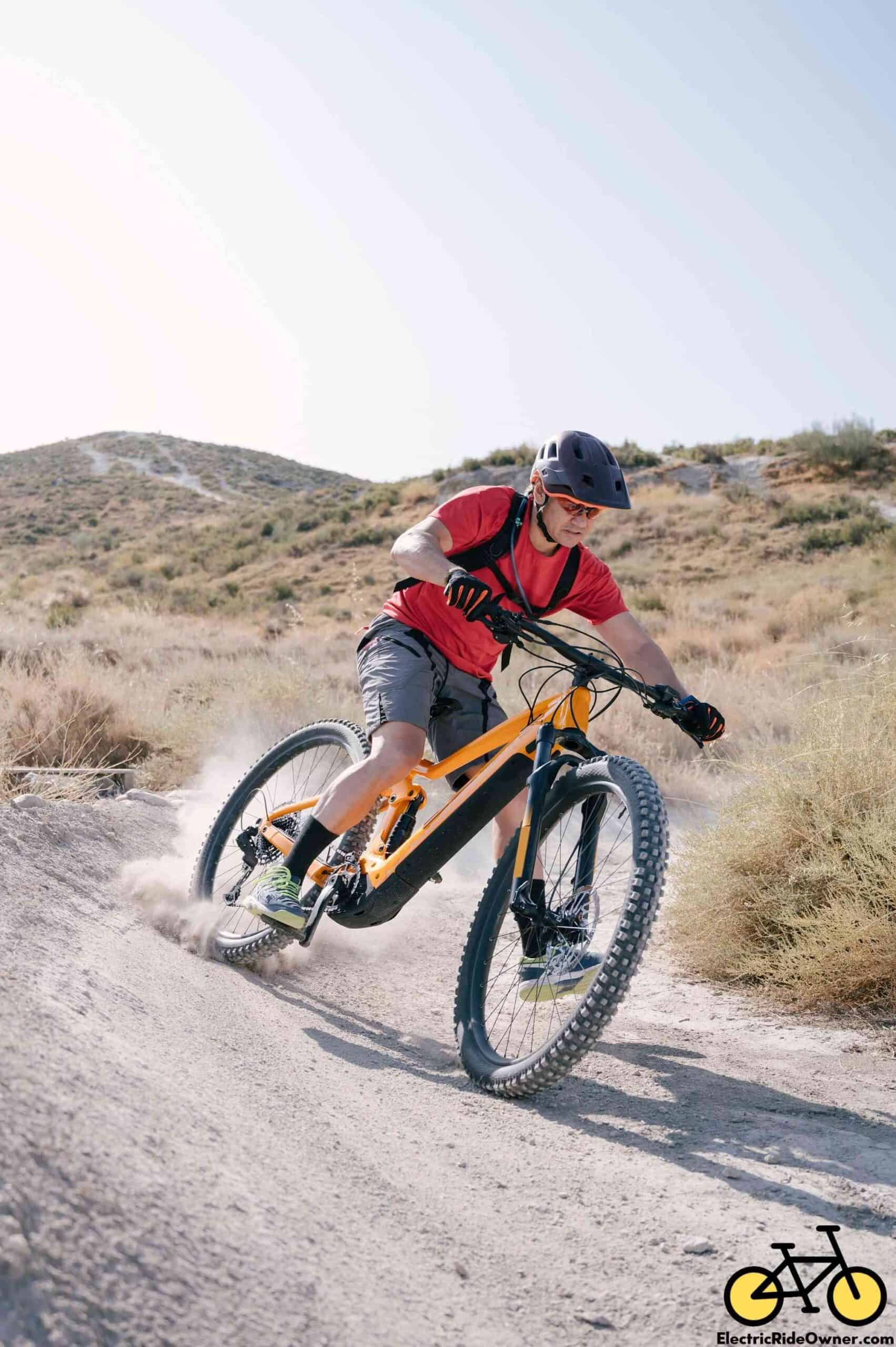
With tremendous advantages, hydraulic brakes are what most riders prefer to use. The braking system is complicated, but they perform well. In addition, they are reliable in extreme styles of riding.
To continue being reliable, you should bleed your hydraulic brakes as soon as you observe they need bleeding. Doing so can prevent braking failure from occurring.
Can You Adjust Hydraulic Disc Brakes?
As a general rule, you can manually adjust hydraulic disc brakes. Technically, hydraulic disc brakes self-adjust as brake pads wear down. But, you can manually adjust them by realigning the brake caliper.
As the wearing of pads occurs, the piston in the caliper moves forward to a new position to compensate for the total pad wear.
Though manually adjusting the caliper is not a requirement, it is still best to adjust it manually when needed.
For example, suppose you hear a rubbing sound in your hydraulic disc brakes. In that case, you can manually adjust the brake caliper and center it over the rotor to get rid of the rubbing sound.
How Do You Adjust Hydraulic Brakes On Electric Bikes?
- Lift your e-bike so you can work accordingly.
- Spin the wheel and observe if there’s a squeaky sound
- Loosen the bolts of your brake caliper
- Squeeze and hold your brake lever.
- Tighten your brake caliper mounting bolts
After doing the steps above, you can ride your e-bike again. Note that these steps are only general steps in realigning the brake caliper. Use them at your own risk.
Note: You should seek the help of a professional as doing these steps incorrectly can lead to serious harm. We won’t be held liable for your actions.
Some hydraulic brake models may require you to do additional steps. In that case, always follow your e-bike’s hydraulic brakes manual.
Take note that hydraulic brakes are advisable to pair up with other braking components that are recommended for the hydraulic brakes you use. This way, you can experience the full performance of your hydraulic braking system.
Watch this video of Park Tool about aligning hydraulic disc brakes.
How Often Shall You Bleed Your Hydraulic Brake?
On average, SRAM and TRP hydraulic brakes should bleed yearly. On the other hand, Shimano hydraulic brakes need to bleed after six months for optimal function. However, some people bled their hydraulic brakes once in three years.
Bleeding of hydraulic brakes means removing the air bubbles inside the hydraulic braking system. Bleeding the hydraulic brakes is crucial. Air bubbles inside the system can significantly reduce your hydraulic brakes’ braking power and efficiency.
The bleeding interval for hydraulic brakes differs for each manufacturer. Some manufacturers may require bleeding their hydraulic brakes once or twice a year.
This way, they can ensure the safety of everyone who uses their hydraulic brakes. However, there are instances when riders bleed their hydraulic brakes once in a 2-6 year span of time.
When it comes to the type of fluid needed in bleeding, always use a hydraulic fluid compatible with your hydraulic brake. For instance, use mineral oil if your hydraulic brakes are compatible with mineral oil.
On top of that, never use DOT fluid on hydraulic brakes that need mineral oil or mix them. That can either make your hydraulic brakes malfunction or damage your entire braking system.
How Do You Know If Your Hydraulic Brakes Need Bleeding?
As a general rule, you know that your hydraulic brakes need bleeding if you can pull your brake lever down further towards your handlebars than normal. Also, if the amount of travel when you pull the lever becomes more significant over time, it is a sign that the brakes need bleeding.
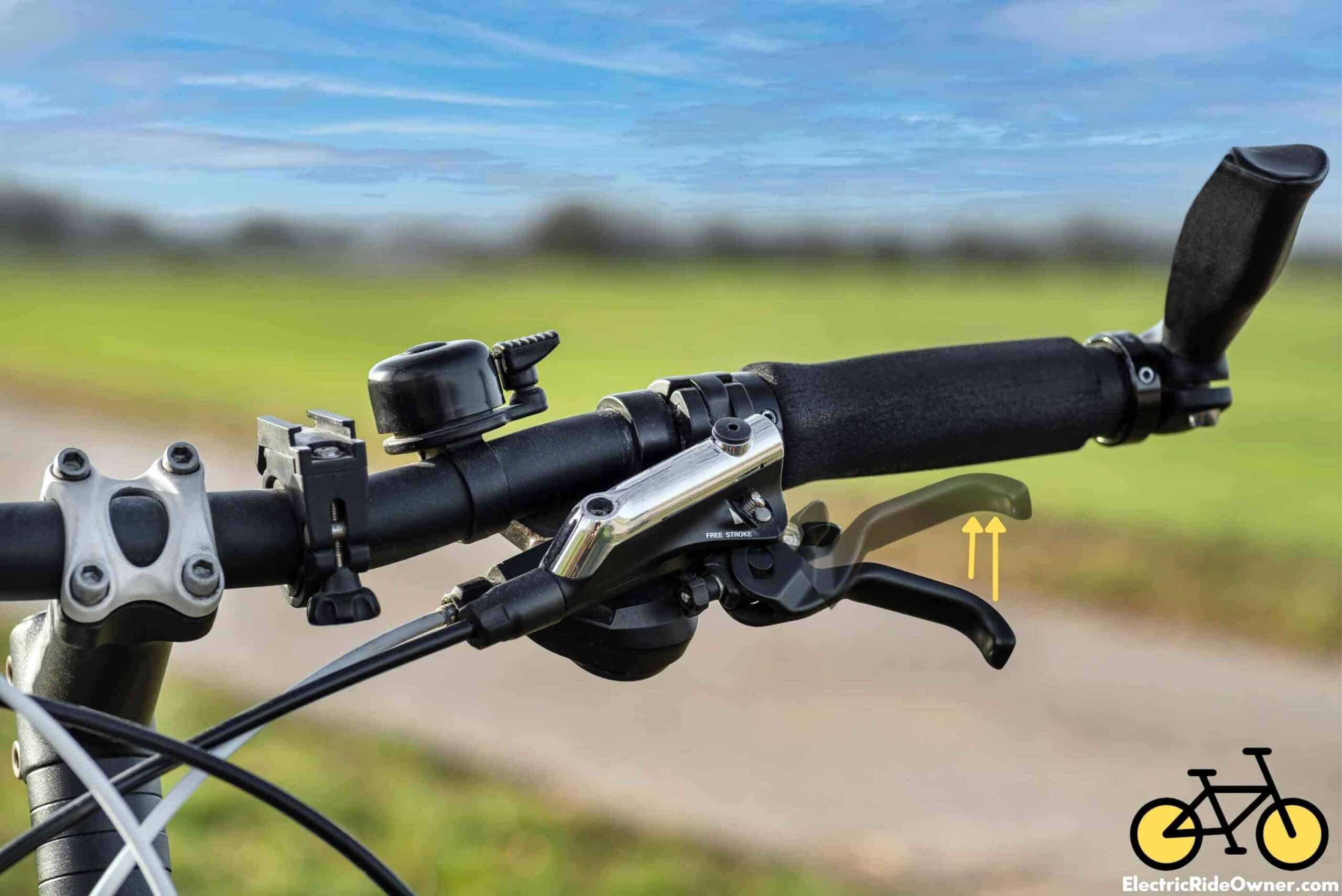
This is sometimes referred to as a loose brake lever or a spongy lever.
Hydraulic brakes need to bleed when air bubbles build up inside the hydraulic braking system. These air bubbles are compressible, which makes your brake not work correctly.
When you apply pressure to air, it compresses and does not transmit force to the brake caliper. As a result, you have a decreasing braking capability.
Hydraulic brakes use incompressible fluid to make the hydraulic braking system works.
One way to determine if there are air bubbles in the hydraulic system is by checking the brake lever. If your lever is too loose or if you can pull it near the handlebar, your hydraulic brakes need bleeding.
If you have observed that your hydraulic brakes need bleeding, bleed them. If you don’t, brake failure may happen. So don’t wait until it happens.
Imagine riding downhill with a failing braking system. Of course, braking failure is everyone’s worst nightmare!
DOT 5.1 Vs. Magura Royal Blood Vs. Shimano Mineral Oil For Hydraulic Brakes
| Brake Fluid | Boiling Point |
| DOT 5.1 | Dry Boiling Point: 518 °F (270 °C) Wet Boiling Point: 374 °F (190 °C) |
| Shimano Mineral Oil | 536 °F (280 °C) |
| Royal Blood Mineral Oil | 248 °F (120 °C) |
The dry boiling point of DOT 5.1 refers to the average boiling temperature of newly bought fresh brake fluid. The wet boiling point refers to the average boiling temperature of DOT 5.1 brake fluid when the system has absorbed 3.7% of water volume.
The boiling point of brake fluid used in hydraulic brakes is the average temperature at which the fluid boils and vaporizes. When boiled, the liquid brake fluid turns to gas and stays inside the system in the form of air bubbles.
Note that brake fluid must be incompressible to work.
It is a big problem when you squeeze the lever, and force is applied to compress air bubbles inside the system. In that case, the brake fluid can no longer transfer the applied force into the brake caliper.
When the hydraulic fluid reaches the boiling point, it can damage the entire braking system. In worst scenarios, you can have brake failure.
DOT 5.1 is a glycol-ether-based brake fluid used for hydraulic brakes and clutch systems. Since DOT 5.1 is glycol-based, it can absorb humidity from the outside environment and distribute it throughout the system.
Shimano and Magura both use mineral oil as the brake fluid of their hydraulic brakes. Mineral oil is hydrophobic, meaning it does not absorb moisture from the atmosphere. Mineral oil is also non-toxic, and it does not damage the paint and polishes.
However, DOT fluid can damage the paints and harm your skin if you touch the fluid. The advantage of DOT fluid is that it will last a much longer time.
One of the components of your hydraulic braking system or any other braking system is your brake pads. If you are interested in learning how long e-bike brake pads last, we have published an article, “How Long eBike Brake Pads Last (We Tested 97 Electric Bikes)”.


